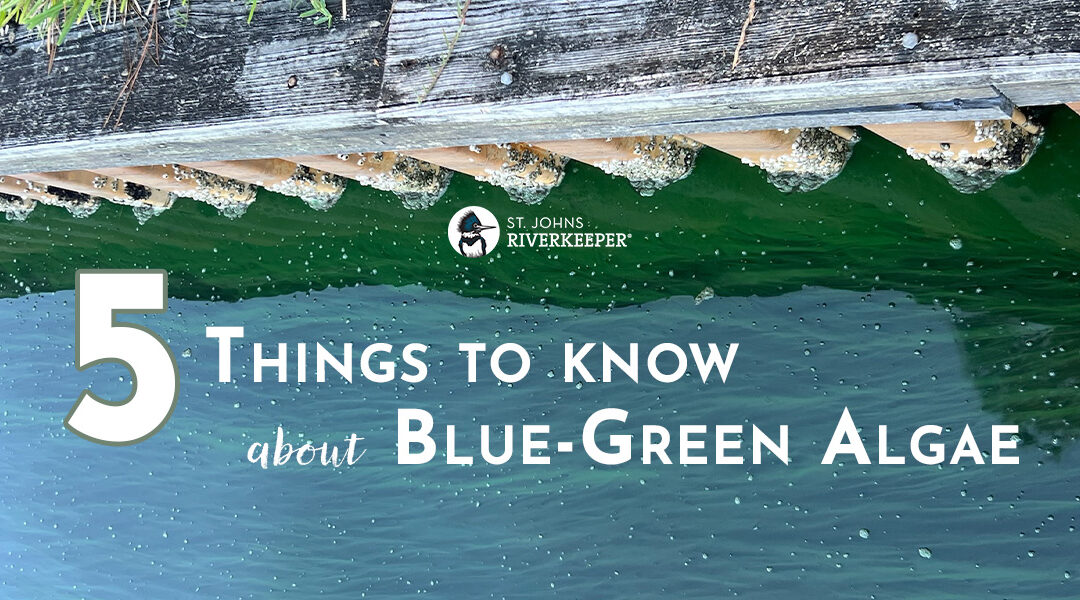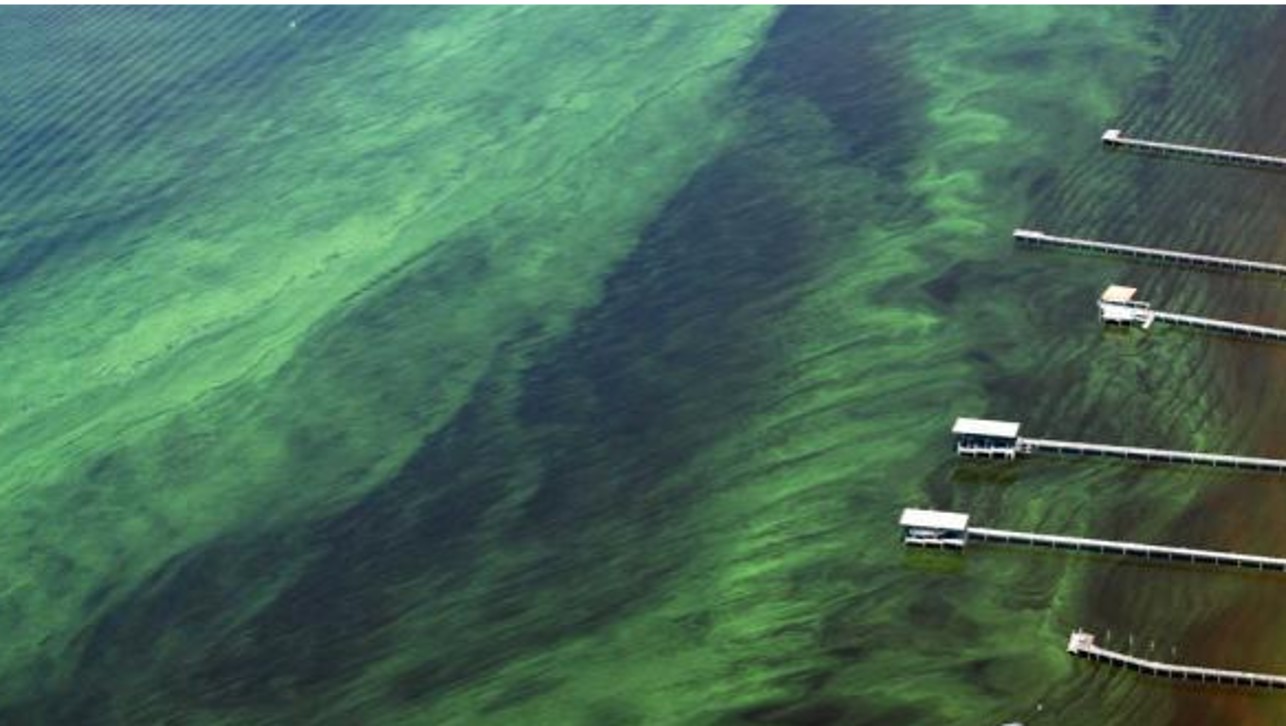 “Algae Season” is, unfortunately, in full bloom in the St. Johns River watershed. Harmful algae blooms (HABs) can prevent sunlight from reaching underwater plants (like the submerged aquatic vegetation we are fighting to SAVe), clog fish gills, and deplete oxygen from the water, harming aquatic life and potentially causing fish kills. HABs can also release dangerous toxins that are harmful to our health.
“Algae Season” is, unfortunately, in full bloom in the St. Johns River watershed. Harmful algae blooms (HABs) can prevent sunlight from reaching underwater plants (like the submerged aquatic vegetation we are fighting to SAVe), clog fish gills, and deplete oxygen from the water, harming aquatic life and potentially causing fish kills. HABs can also release dangerous toxins that are harmful to our health.
We’ve laid out 5 things you need to know to stay safe and informed when it comes to blue-green algae and HABs.
1. What Causes Blue-Green Algae Blooms?
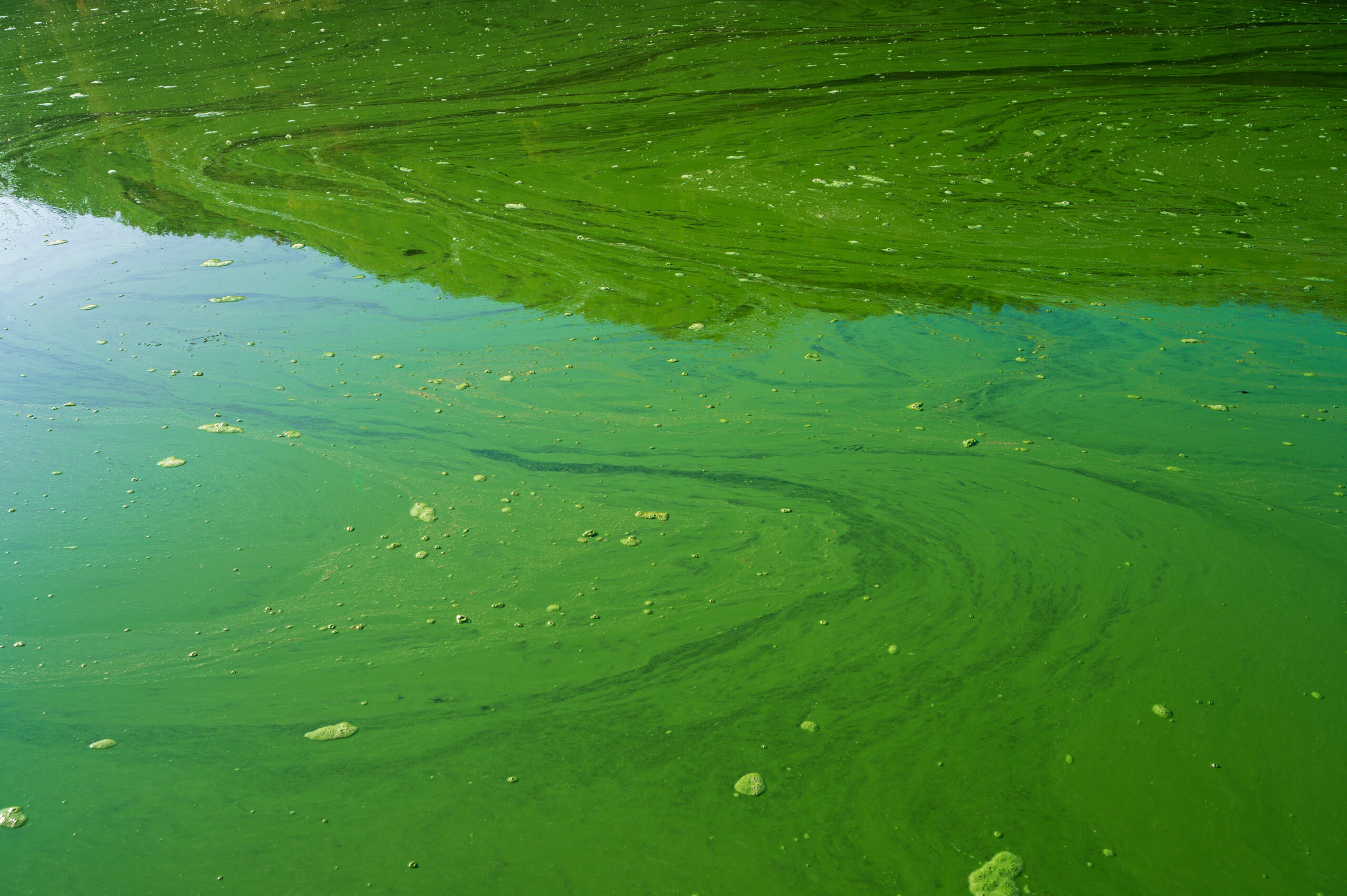
Blue-green algae or cyanobacteria completely inundate a body of calm water.
Nutrients and blue-green algae, or cyanobacteria, are naturally occurring in our environment. However, too much nitrogen and phosphorous can cause excessive algae growth that severely impacts the ecological balance and health of our waterways.
Some of the major sources of nutrient pollution (phosphorous and nitrogen) in the St. Johns River:
- The application of sewage sludge (also known as biosolids) on agricultural lands surrounding our River’s Headwaters at Blue Cypress Lake
- Fertilizer run-off from agricultural, urban, and residential lands (learn more about being river-friendly at your own home)
- Septic tanks
- Industrial wastewater discharge and sewage spills
- Aquatic spraying
- Reclaimed water
- Atmospheric deposition
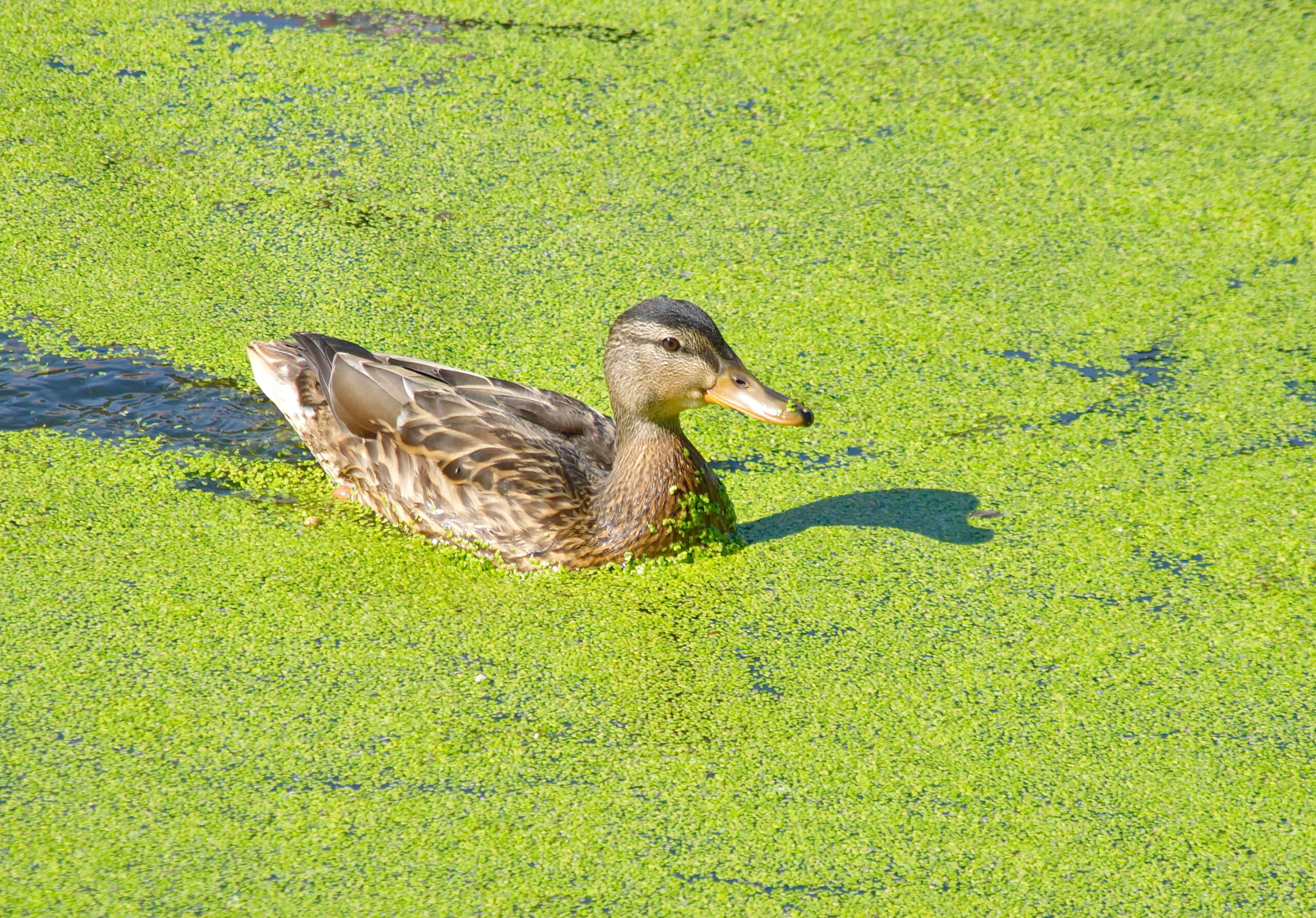
This is NOT algae – but a floating plant called duckweed, which is sometimes mistaken for an algae bloom. Upon closer inspection, you can see the leaves if you come across these floating plants.
2. How do I recognize an algae bloom?
If you encounter a green scum coating the surface of the water or green flecks or clumps suspended in the water column, it may be an algae bloom. Do not go into or play in water that smells bad, looks discolored, has foam, scum, algal mats, or paint-like streaks on the surface.
There is no standard duration for a bloom and no way to determine visually whether a bloom is toxic.
3. What do I do if I see an algae bloom?
Avoid boating, recreating (paddling, fishing etc.), or swimming in the area if you see an algae bloom. Some blue-green algae blooms produce toxins, but you cannot tell if the bloom is toxic just by looking at it. A good rule of thumb is to assume it is toxic and avoid exposure.
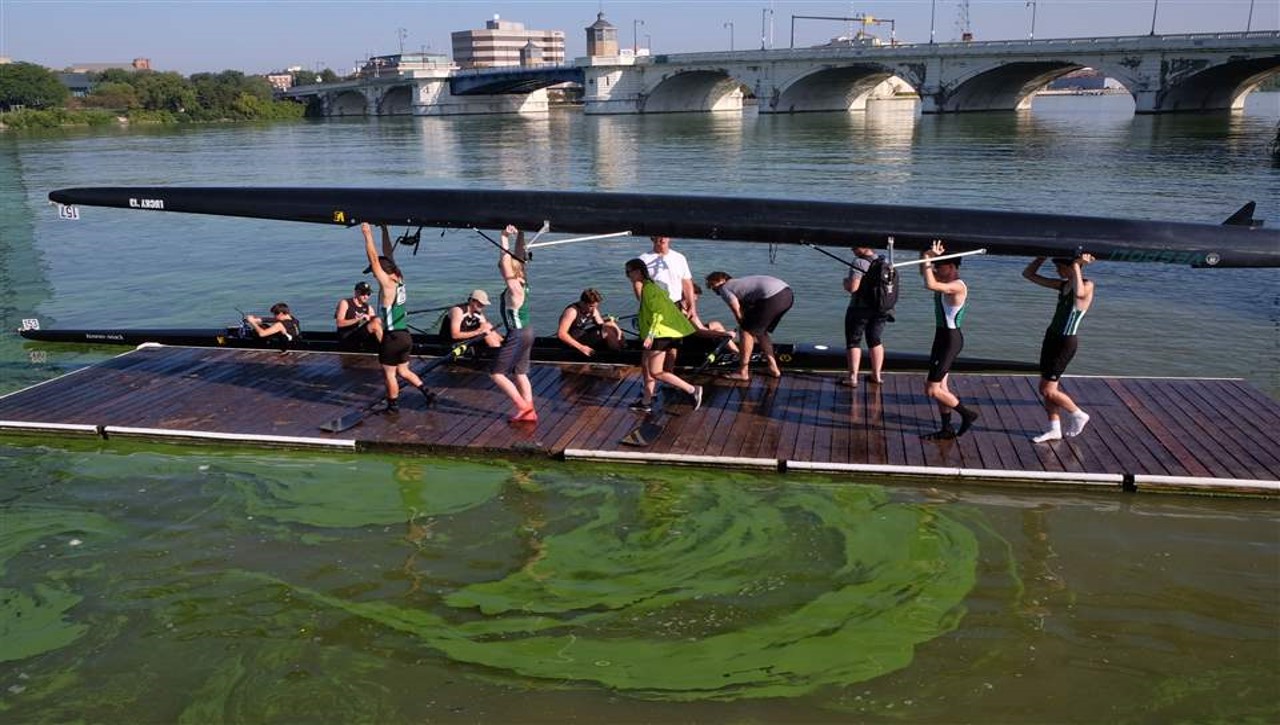
Please do NOT recreate in waters where an algae bloom is present.
Toxins produced by some algae blooms can cause rashes, stomach cramps, nausea, diarrhea, and respiratory irritation. High exposure to some algal toxins can potentially even harm the liver and nervous system.
If you or your pet come in contact with a bloom, wash off immediately and thoroughly with clean water and soap. As advised by the CDC, when in doubt, keep yourself and pets out. Pets can get very ill or even die from swallowing water with algal toxins.
Check for and follow local shellfish and fish advisories before eating any fish or shellfish you collect yourself. Algal and cyanobacterial toxins in fish or shellfish have no taste or odor. Cooking or preserving food does not remove toxins. Thus, you cannot tell if the seafood is safe by just looking at, smelling, or tasting it.
4. How do I report an algae bloom, or look up locations of recent blooms?
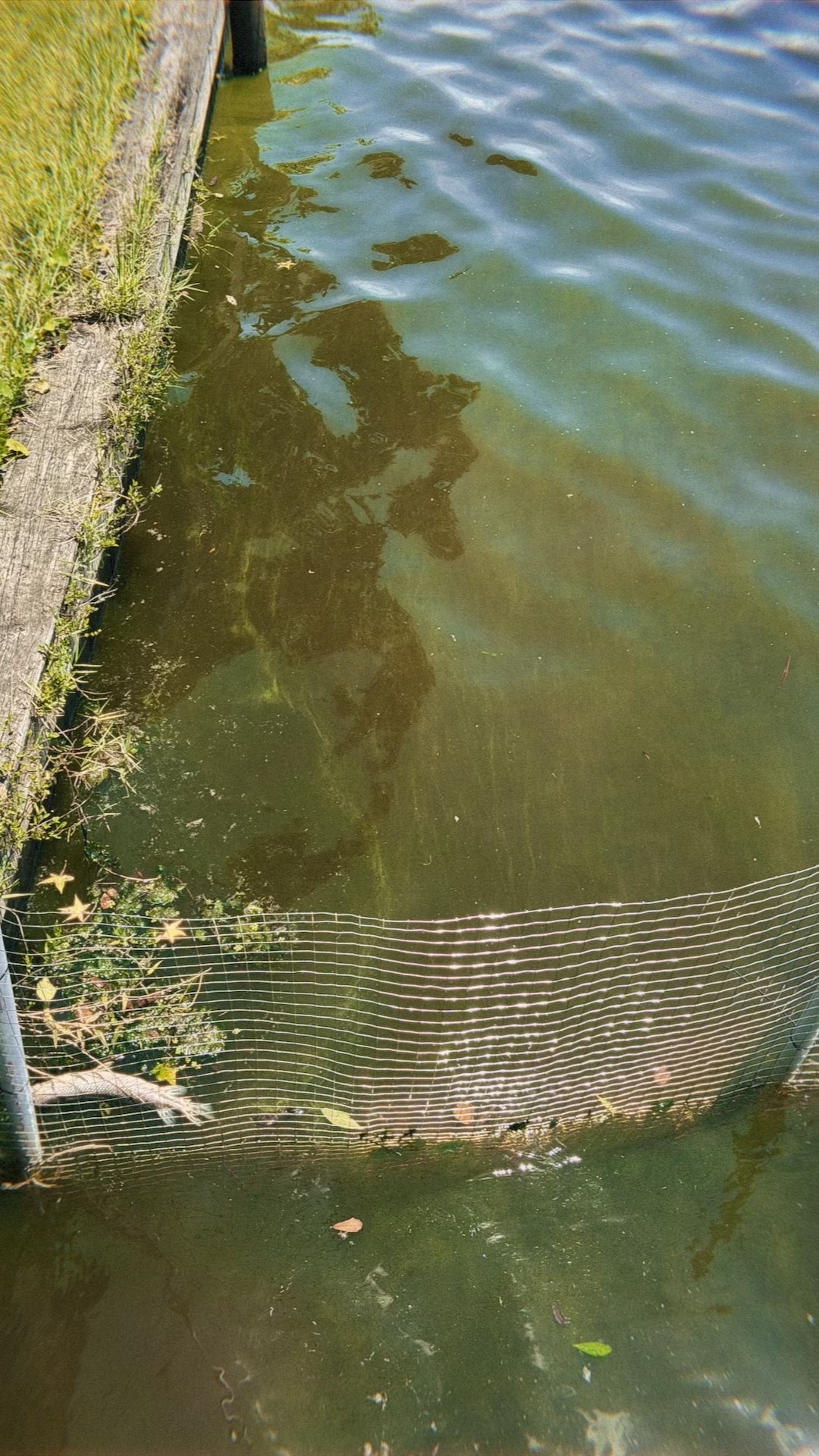
Algae on the river in May 2025 at Colee Cove.
If you encounter an algae bloom, please take photos and note the time, date and location (as exact as possible).
- Report blooms to the Florida Department of Environmental Protection using their online form or call toll free at 1-855-305-3903.
- Email report@sjrk.org to notify St. Johns Riverkeeper with photos, time, date and location.
Report any illnesses that you believe were caused by algae, cyanobacteria, or their toxins to your local or state health department.
Before you get out on the water, visit the Florida Department of Environmental Protection’s Algae Bloom Dashboard to see an interactive map of algae bloom samples and results in our waterways.
5. What else can I do?
Contact Your Elected Leaders
Tell your Mayor, City Council, or County Commissioners that we need to enact stronger fertilizer ordinances and enforce the ones we have!
Be River Friendly
Eliminate or reduce your use of fertilizer and reduce your impact on the health of our river. Learn how to live a more River-Friendly lifestyle.
Educate yourself and others by attending one of St. Johns Riverkeeper’s educational programs and events.
Spread the word! Share what you know with your friends and family and encourage them to be more River Friendly. Follow us on Instagram, Facebook, LinkedIn, Threads and BlueSky.
Don’t Feed the Algae
Toxic blue-green algae outbreaks are increasing in duration and frequency – threatening our waterways and our own health. St. Johns RIVERKEEPER has already gotten reports of blooms this year throughout the watershed. Nutrient pollution, warming waters and runoff from frequent rain storms during the summer could result in even more green muck coating our river as the summer progresses.
Keep yourself and your family safe, stay informed and involved, and do your part!
